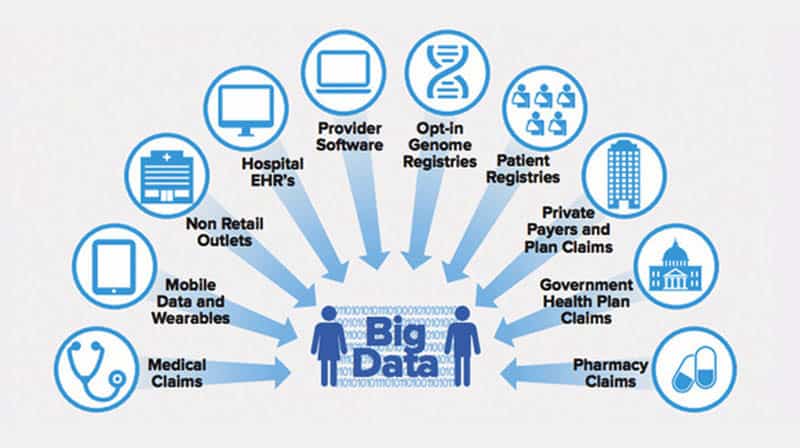Use of data analytics in healthcare started in the late 90s and has significantly impacted the delivery of healthcare services across the globe. It is a combination of business intelligence and analytics that enables hospitals, clinics, nursing homes and doctors' offices to gain insights into patient treatment and outcomes. Therefore, with the application of powerful analytical techniques, it helps healthcare organizations to determine strategies that can be implemented for cost-efficient and quality improvement of the provided services. In 2017, more than 100 million medical records were created at hospitals and clinics worldwide. This figure is expected to surpass 160 billion by 2023 as a result of the rapidly increasing trend towards digitization.
Medical expenses are one of the biggest costs businesses incur. Every year, business owners are looking for ways to bring down costs while at the same time improving quality and care. Data analytics is a tool that business owners can use to identify inefficiencies in their medical practices and help them run more efficiently.
Health care and Internal Medicine Analytics are a match made in heaven. Healthcare has more information about patients than any other sector, not to mention that it is the fastest growing industry in the world. And yet, a plethora of problematic issues have emerged from this overwhelming amount of data, including wasted time and money on unnecessary tests, erroneous diagnoses based on incomplete or out-of-date information, and countless missed opportunities to improve patient outcomes.
The use of Internal Medicine Analytics in healthcare can help physicians make better decisions during treatment. For example, by using predictive analytics you can predict whether your patient will have another heart attack or stroke within the next five years. This information allows doctors to make better decisions as they select which medications are best suited to prevent heart disease.
Patient engagement tools enable healthcare organizations to collect patient-reported outcomes (PROs), including patient satisfaction scores and patient-reported quality measures (PRQMs). These tools can be used not only for internal reporting but also for external reporting purposes such as Meaningful Use requirements or QIP and VBP contracts with some providers offering incentives for achieving high scores on certain measures or meeting certain goals established by payers or government agencies like CMS.
Prescriptive predictive algorithms are becoming more and more popular in healthcare. They are designed to help clinicians make better decisions about how to treat patients by analyzing data that is relevant to their care. One example of a prescriptive predictive algorithm is an algorithm that has the capacity to predict a diabetic patients risk of unplanned medical visits by analyzing body mass index, smoking status, and other factors associated with diabetes.
Using Internal Medicine analytics for healthcare, hospitals and medical practitioners can make genuine strides in improving the way that health care is administered. By uncovering hidden patterns, opportunities, and insights from data, organizations can make smarter business decisions. Simply by making better decisions, which stem from data analytics, you can increase efficiency, profit and patient healthcare outcomes.






